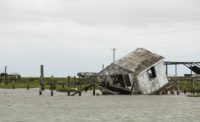Efforts to reduce nitrogen and phosphorus discharges in the Chesapeake Bay's watershed states have made a noticeable impact, according to a recent report, and more improvements are expected in the coming years. Citing Environmental Protection Agency data, the Environmental Integrity Project reports that discharges of nitrogen from industrial facilities and sewage treatment plants declined about 3 million tons, or about 6.5%, in 2012 compared to the previous year.
"There's been a lot of money spent, and nitrogen discharges have gone down pretty significantly," says Eric Schaeffer, executive director of EIP.
Discharges in Pennsylvania, Virginia, the District of Columbia and West Virginia all declined between 2011 and 2012, with Pennsylvania down more than 16% and Virginia down by 7.5%.
But more work remains. The report notes that the Chambersburg Borough Sewage Treatment Plant exceeded its permitted nitrogen discharges by more than 100,000 lb in 2012. One of the upgrades currently under way at the facility is a $50-million ultraviolet-disinfection system that will run in parallel with the existing system. All the improvements, which were designed by AECOM, are expected to be operational by next year.
Lance Anderson, water and sewer superintendent of Chambersburg, says the borough started buying credits last year to offset its discharges and bring it into compliance. "The purpose of the design is that we won't have to buy credits in the future," he says.
While water and sewer authorities in some states already are making progress, others have more work to do. The EIP report also observes that Delaware, Maryland and New York saw discharges increase in 2012. Schaeffer notes that, in some cases, authorities in those states have yet to hit the deadline for improvements, "so they have time to make the numbers and hit their goals."
In Maryland, several municipalities are working under consent agreements that allow them time to meet their discharge goals by 2017.





